Lenovo ThinkStation P620 Review: A Vehicle for Threadripper Pro
by Dr. Ian Cutress on February 16, 2021 9:30 AM ESTVisual Inspection
As with most workstations designed for under-the-desk operation, due to the need to power a big CPU and a big GPU (or two), the ThinkStation P620 is a sizeable machine, but smaller than you might think. The comparative dimensions are actually significantly smaller than my own personal Corsair Graphite 760T main gaming system: the P620 is 33.4 liters, while the 760T is 78 liters, more than double. A fully laden system has a max configuration of 24 kg, or 53 lbs.
Inside this P620 chassis Lenovo has effectively put in its own custom ATX motherboard. The initial aspect of how custom it is can be seen in the sense that it has a connector for a a special custom 1000W 80 PLUS Platinum power supply. The power supply has no output cables, and this makes the whole design a lot nicer and cleaner to manage – no cables travelling up the rear of the design, making the whole unit thinner.
The power supply connects through a single custom finger that looks like this:
By having a power supply like this, it provides power for the CPU, the motherboard, and the PCIe slots directly. The motherboard has to be engineered to manage all this power, so we’re likely looking at a 14-layer or 16-layer board, compared to the 6-8 layer regular motherboards that we see.
For the items that do need cables, like add-in cards and 2.5-inch/3.5-inch drives, Lenovo uses output ports on the edge of the system, where a traditional motherboard has SATA connectors, and from these the system can power the usual graphics cards ports.
It should be noted that in this SATA port area, even though there is a full PCIe x16 slot, it looks like you can’t fit a full GPU in here. This area isn’t for GPUs, but more for add-in cards.
There are six PCIe 4.0 slots, in a x16/x8/x16/x16/x16/x8 configuration. The preferred slot for the first GPU is the third slot, as shown in the picture above. A second GPU is supposed to go into the first slot at the top, and then any add-in cards (such as M.2 combo cards or additional Ethernet) are meant to go in the bottom two slots.
On the left of the PCIe, Lenovo has not only built a tool-less PCIe latch system, but it’s a one-finger design. Someone is super smart at Lenovo, as this no doubt helps with building the system as well as maintenance and repairs. Again, this is something that every system needs to have.
On the right hand side, Lenovo has an entry fan that can be removed very easily. Built into this housing is a rigid connector implementation, to help with holding up heavy graphics cards. Every system needs this.
At the top of the system, we have the socket area. The power delivery for the socket would appear to be split to the left and to the right, with two smaller copper heatsinks. This design you imagine might not be sufficient cooling for the power delivery on a 280 W CPU, but Lenovo has designed the unit for baffled airflow, and at this top area of the chassis is cooled mostly by the super interesting CPU cooler.
This uses what looks akin to 10 heatpipes (or five long ones) split into two batches of fins, each with its own fan, drawing air from the front of the chassis and pumping it out the rear. You might think this cooler looks a lot like the dual tower stacks available on consumer systems, but these two are at different heights, Perhaps this small design change enables a little more of the Bernoulli airflow affect to take hold, increasing the effective cooling. At any rate, this cooler is sturdy and does the job. I believe it to be a custom Foxconn design for Lenovo, and so alas not available at retail.
On the memory side of things, there are four slots above and below the socket. The processor supports eight channel memory, so we have one slot per channel here. Our system only came with two memory modules from Lenovo, but we filled the system with eight. One of the great things about this unit is the quad-channel memory fan bracket that Lenovo has put on both sets of four. These fan units are sturdily built, with a really nice spring retention mechanism. When systems like this have 64 GB of memory per slot, even at DDR4-3200, they can start using enough power that active cooling is a positive thing to have.
On the back of the system we have the audio outputs on the far left, just a simple 2.1 Realtek ALC462 codec here because nothing more is really needed on a compute system. There is space for a COM port (optional add-on), two PS/2 ports, two USB 2.0 ports, four USB 3.2 10 Gbps ports, and a 10 gigabit Ethernet port powered by an Aquantia AQC107.
The front panel houses the DVD-RW if that option is selected, a 15-in-1 card reader (if selected), the power button, a 3.5mm audio jack, two USB 3.2 10 Gbps Type-A ports, and two USB 3.2 10 Gbps Type-C ports. One of the Type-A ports is an always-on port. There is also a four-digit POST sequencer to help debug any start-up issues.
Overall, what I like about Lenovo workstations like this is that there are a number of unique little add-ons that only a large OEM like Lenovo can provide, and I wish these add-ons were more ubiquitous:
- A one output zero-cable power supply
- Tool-less Fan cages removable with one-two fingers
- Tool-less PCIe retention mechanism built into the chassis
- Tool-less PCIe removal bracket also useable with one-two fingers
- DRAM fan brackets (significantly better than what most/all DRAM vendors offer)
From this, Lenovo’s design gets a gold star from me. This also leads into the system level tests.



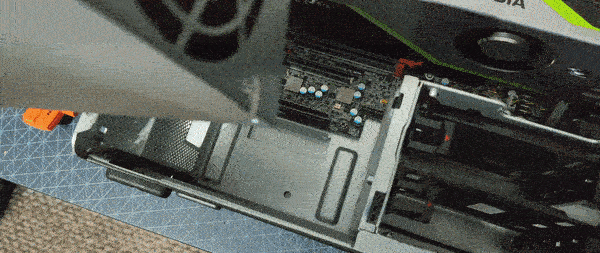
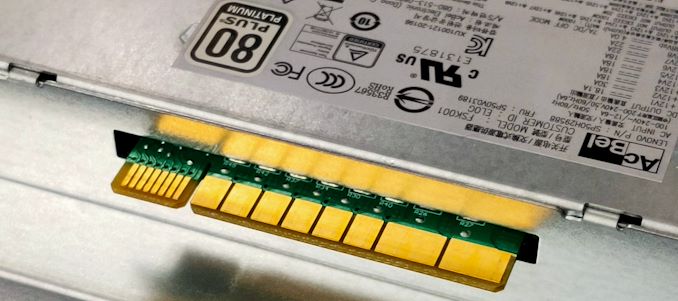
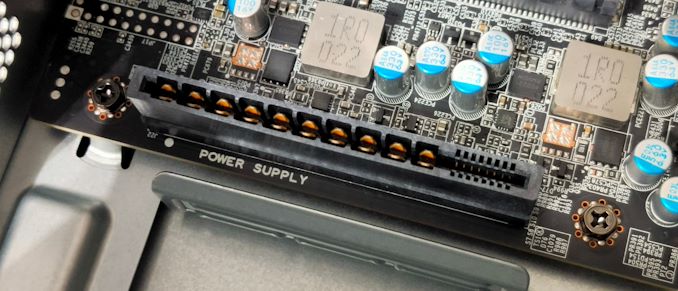
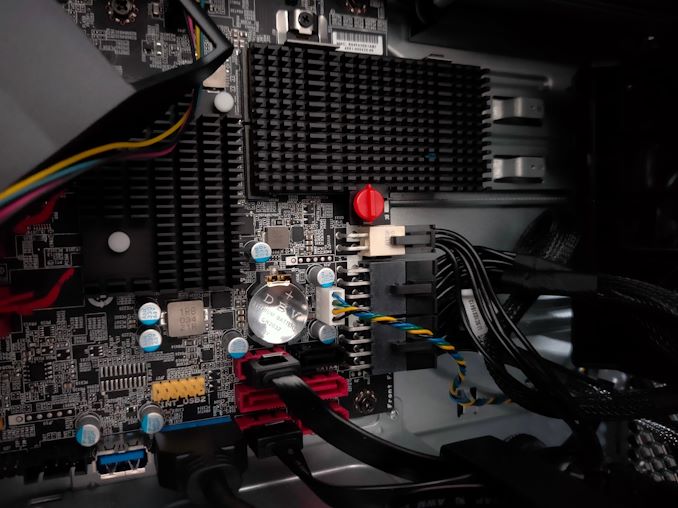


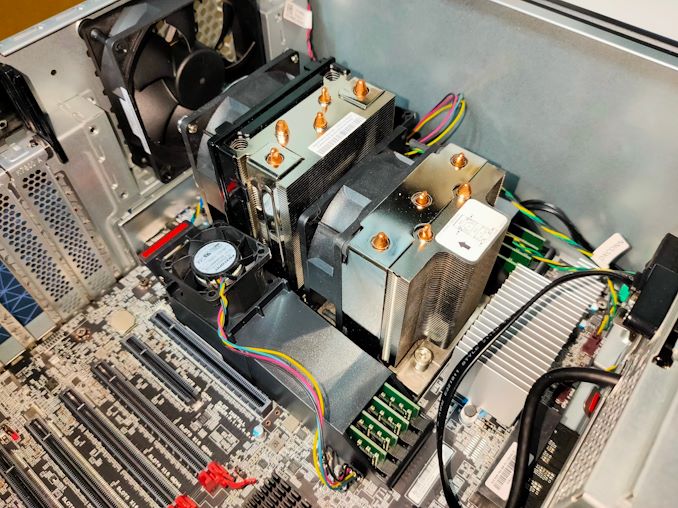
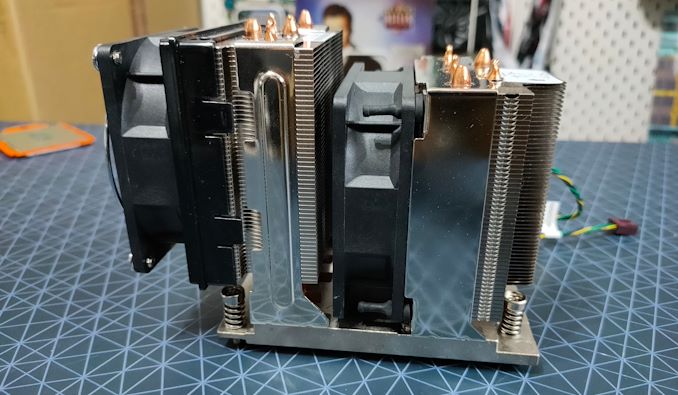

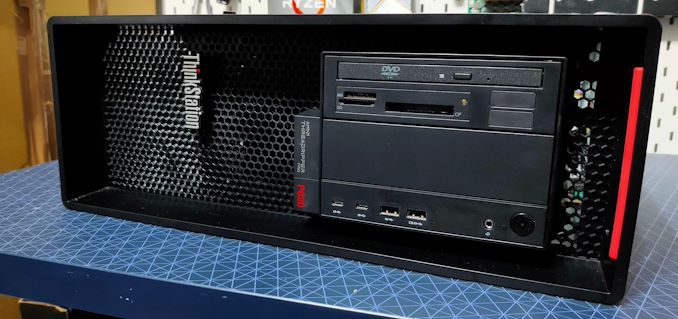








47 Comments
View All Comments
GeoffreyA - Tuesday, February 16, 2021 - link
"If all PCs were like this, the world would be a brighter place."Indeed, feel the same way too. Sheer excellence for once.
pattiobear - Tuesday, March 2, 2021 - link
More engineering and thoughtful design? Sure.Proprietary/nonstandardized parts and connections? Not as much.
willis936 - Tuesday, February 16, 2021 - link
That’s a nice looking machine and is fairly priced. My only concern is the use of small, high power fans for cooling. It makes sense in rack mounted situations, but this is a large workstation with lots of free space. They should stretch their legs with larger heatsinks or water cooling.Also, in the conclusion:
“ On to that, the system also has a PCIe bracket area that is both tool-less and easy two use”
Unless this is a pun I missed, this should be “to” not “two”.
DanNeely - Tuesday, February 16, 2021 - link
the case/CPU fans look like full size ones. And while the memory fans are only 40mm, the amount of airflow needed to cool the ram should be low enough that a quiet fan should be sufficient; no need for the eleventeen zillion RPM ones to push >100W each in 1U chassis. The 46db Ian measured at load fits with quiet fans not screamers; if the ram fans were driving the noise profile I would have expected him to say something because they'd have a very different sound than bigger fans do when speeding up.andychow - Tuesday, February 16, 2021 - link
If they are offering a 42% discount on a new system, you know they are screwing you over if you ever pay retail.This is an 8 channel memory system, comes base with 1 stick? They shipped it with 2 sticks? Rather strange marketing descision.
Spunjji - Wednesday, February 17, 2021 - link
"you know they are screwing you over if you ever pay retail"That's just it - nobody ever pays the quoted prices on these things. The question is whether you get the "discount" that's for everybody or the one that's for special customers.
stevielee - Tuesday, February 16, 2021 - link
Noticed that just behind the bars of Memory is a photo of Rick Astley from his early "Never Gonna Give You Up" days. Could there be a 'hidden' review meaning about this Lenovo Thinkstation P620? As in being "Rick Rolled" if you buy into the whole kahuna?WaltC - Tuesday, February 16, 2021 - link
Nice review, Ian...;) All I can say looking at those options is a person could do much better just starting with the motherboard and putting the system together himself with his own component choices! Reducing an 8-channel capability to dual channel ROOB is a big blooper--should at least be supplying 4 channels with 4x8GB, imo. The motherboard is PCIe4, isn't it? Odd to see the NVMe's restricted to PCIe3. Leaving a boatload of performance on the table, looks like.WaltC - Tuesday, February 16, 2021 - link
Meant to say 4x16GB...8GB, even 4-channeled, really isn't even a minimum...;)TomWomack - Tuesday, February 16, 2021 - link
I am a bit wary of the 'power supply can easily be replaced' line - it is a very custom power supply, if Lenovo stop making them you're screwed, and it's much more likely that Lenovo would stop making this specific thing than that ATX power supplies become unavailable.In my experience power supplies are very much the first thing to fail, which is why I'm concerned about this - I've taken to buying second-hand dual-PSU servers and keeping one PSU aside so that I have one spare per system.